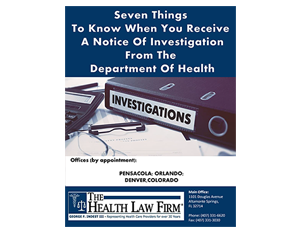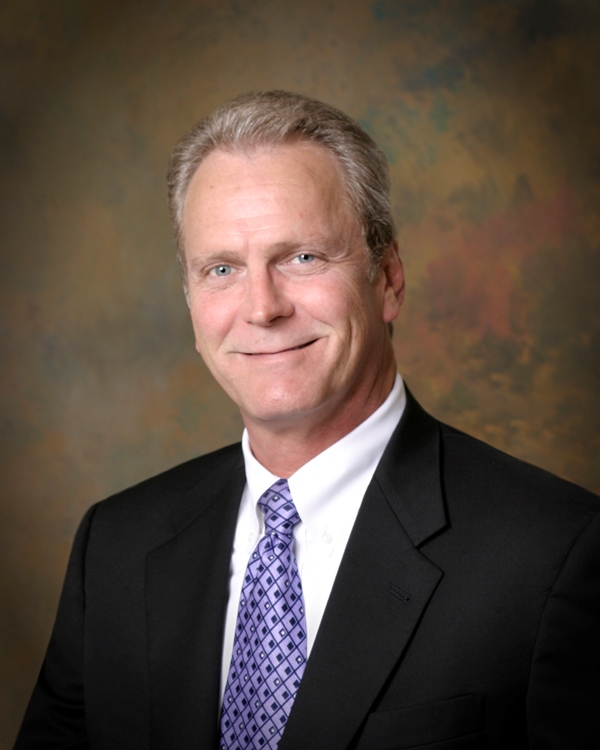Call: (407) 331-6620 or (850) 439-1001
Toll-free: (888) 331-6620

Seven Things To Know When You Receive A Notice Of Investigation From The Department Of Health

Drug diversion has been an ongoing problem for hospitals for many years. Narcotics are the most common target of drug diversion. The culprit is usually a hospital employee that has become addicted or dependent on narcotics. However, the two cases above are unusual because the hospital employees involved in those cases were engaged in a criminal enterprise. In both cases, the hospital employees were stealing the hospital’s drugs for financial gain.
The Drug Enforcement Administration (DEA) regulates drugs that have a high potential for abuse and a high likelihood of causing dependence. We all know that narcotics are the drugs most frequently diverted for financial gain. For example, an Oxycontin tablet sells legally for about $6; illegally, it can command $50. A hydrocodone tablet that sells for $1.50 legally can sell illegally for $5 to $20. Obviously, there can be huge profits made by unscrupulous individuals, however we don’t always recognize that non-narcotic drugs can make a lucrative and easier target for diversion.
The drugs stolen in Miami were expensive drugs used to treat cancer patients. Unlike narcotics, these drugs were not regulated by the DEA. Since the drugs stolen in Miami were not controlled substances, they were not kept under multiple layers of security–but they were still extremely valuable. The drugs recovered from the home of one suspect had an estimated value of more than $700,000. According to one of the investigators, there is a thriving grey market for stolen drugs, including cancer drugs.
Respiratory medications, while not as expensive as some cancer medications, can still be stolen for profit. At least one case has been reported where a truckload of respiratory medications worth $1.15 million was stolen. The criminal ring involved in that theft appeared to target non-narcotic and over-the-counter drugs. The ring was involved in the theft and resale of $80 million in prescription and over-the-counter drugs. Apparently the thieves know the value of these drugs even if we don’t.
A hospital that is the subject of drug theft will suffer an economic loss but also is subject to fines and other sanctions by regulatory agencies for not having proper oversight. The Texas hospital had to pay a $20,000 fine for failing to prevent the drug theft by its employees. No hospital can afford to lose millions due to theft let alone pay a regulatory fine imposed on top of the loss.
RTs and their hospitals need to be reassessing the safety and security of their medication supplies, including non-narcotic medications.
Main Office • 1101 Douglas Ave., Ste 1000, Altamonte Springs, FL 32714 • (407) 331-6620
By Appointment • 5401 S. Kirkman Road, Suite 310, Orlando, FL 32819 • (888) 331-6620
By Appointment • 201 East Government Street, Pensacola, FL 32502 • (850) 439-1001
By Appointment • 201 St. Charles Ave., # 2500, New Orleans, LA 70170 • (888) 331-6620
Medicare/Medicaid Audits, Health Care Law, Contracts, Hospital Privileges Hearings, Investigations, DEA Defense, Board of Medicine Defense, Healthcare Fraud Defense, Medical Staff Fair Hearings, Administrative Hearings, PRN, IPN, Professional Licensing, Medicare/Medicaid Fraud Defense, Nursing Law, Hospital Peer Review, Hospital Law, Board of Dentistry, Board of Nursing Complaint Defense, Board of Pharmacy, Medicaid Fraud Control Unit (MFCU) Defense, Search Warrant and Subpoena Defense, NBME Representation, USMLE Challenges, ABIM Representation, Resident Physician Defense, VA & Military Physician Defense, Department of Health Investigation Defense, and more…
Available in the following Florida cities and counties: Daytona Beach, Fort Lauderdale, Gainesville, Jacksonville, Key West, Melbourne, Miami, Ocala, Orlando, Pensacola, Panama City, Sarasota, St. Petersburg, Tallahassee, Tampa, West Palm Beach, Alachua, Baker, Bay, Bradford, Brevard, Broward, Calhoun, Charlotte, Citrus, Clay, Collier, Columbia, Dade, De Soto, Dixie, Duval, Escambia, Flagler, Franklin, Gadsden, Gilchrist, Glades, Gulf, Hamilton, Hardee, Hendry, Hernando, Highlands, Hillsborough, Holmes, Indian River, Jackson, Jefferson, Lafayette, Lake, Lee, Leon, Levy, Liberty, Madison, Manatee, Marion, Martin, Monroe, Nassau, Okaloosa, Okeechobee, Orange, Osceloa, Palm Beach, Pasco, Pinellas, Polk, Putnam, St. Johns, St. Lucie, Santa Rosa, Sarasota, Seminole, Sumter, Suwannee, Taylor, Union, Volusia, Wakulla, Walton, and Washington
By making this website information available for those who access it does not constitute doing business in or having a presence in any state or jurisdiction, nor does it constitute an advertisement sent to or a solicitation made in any state or jurisdiction. This firm is located in and maintains a presence in only those states where the firm maintains an actual physical office. Its attorneys are only admitted to practice in those states specifically listed on their resumes.
Available in the following states: Alabama, Alaska, Arizona, Arkansas, Connecticut, Delaware, Florida, Georgia, Hawaii, Idaho, Illinois, Indiana, Iowa, Kansas, Kentucky, Louisiana, Maine, Maryland, Massachusetts, Michigan, Minnesota, Mississippi, Missouri, Montana, Nebraska, Nevada, New Hampshire, New Jersey, New Mexico, New York, North Carolina, North Dakota, Ohio, Oklahoma, Oregon, Pennsylvania, Rhode Island, South Carolina, South Dakota, Tennessee, Texas, Utah, Vermont, Washington, West Virginia, Wisconsin, and Wyoming
Disclaimer | Terms of Representation
“The Health Law Firm” is a registered fictitious business name of and a registered service mark of The Health Law Firm, P.A., a Florida professional service corporation, since 1999. Copyright © 2025 The Health Law Firm. All rights reserved.